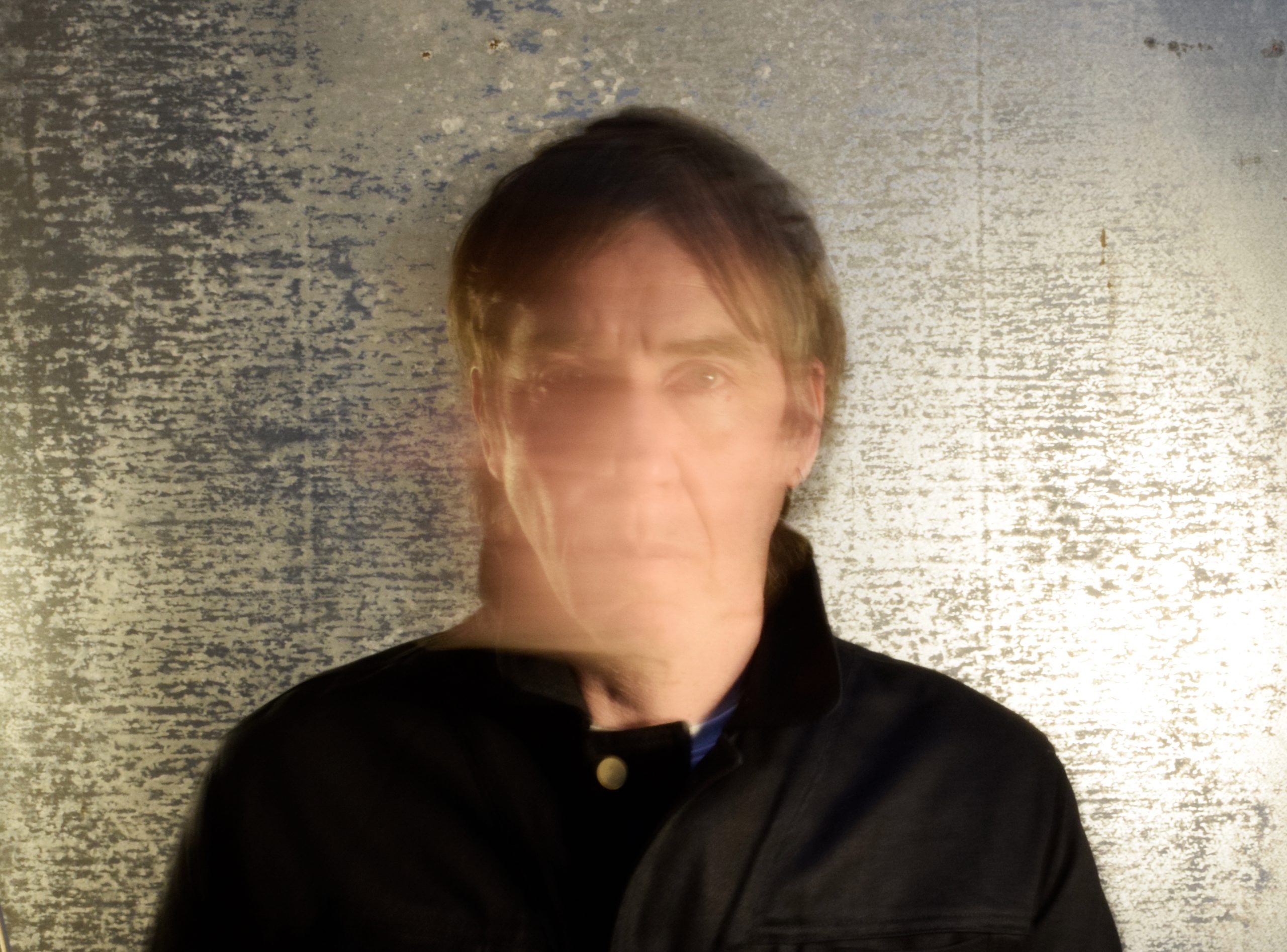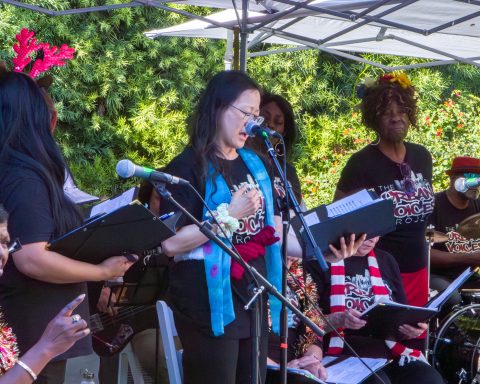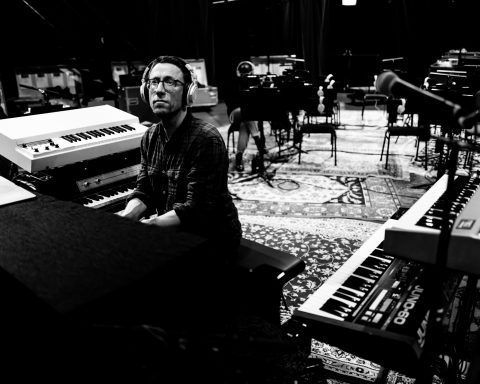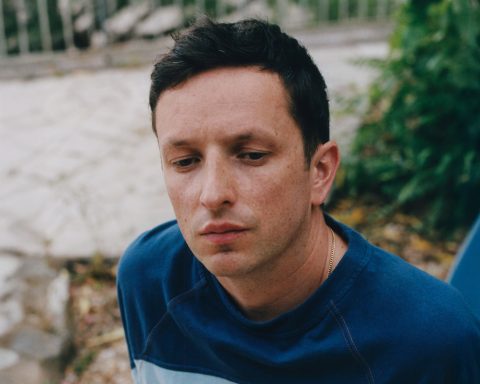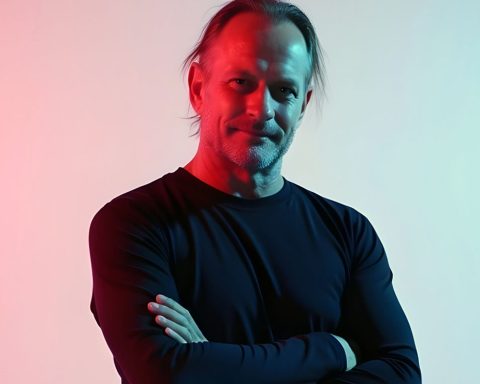Formed in the mid-’90s by Richard Fearless, Death in Vegas debuted with the snarling big-beat LP Dead Elvis, followed by the acclaimed second album The Contino Sessions, featuring alt-rock heavyweights such as Iggy Pop, Bobby Gillespie, and Jim Reid. Such was the band’s profile during this period, they were even enlisted to produce tracks for Oasis’ sixth album, Don’t Believe the Truth. A restless innovator, Fearless would begin to steer Death in Vegas further into the realms of dance music whilst pursuing a more experimental direction under his own name. After a nearly 10-year gap, Death Mask sees the eclectic producer return to the Death in Vegas moniker with a gritty, techno-oriented sound forged in his Metal Box studio, packed with vintage Roland gear.
Journey of Discovery
When Death in Vegas started, electronic music was well into the digital age. Why, then, do you have such an affinity for analog machines?
Some of that came from the Chicago and Detroit records that I fell in love with as a DJ after discovering how they were being made. I was always trying to study sonics, understand how tracks were being put together, and find out the equipment people were using. A lot of the gear that I’ve got now came from thinking, “Is that an SQ-10 triggering an MS-20?” Then I got the gear and tried to find the best way to sync it.
How did you find out that information pre-internet?
There was some literature around at the time, but I’ve also been fortunate to work with some great sound engineers over the last three decades and learn from them. To be honest, when I look at my studio equipment, it’s not really changed much—all of my records over the past twenty years have been pretty much made on the same tools.
Roland Influence
Talk to us about some vintage gear that debuted on your early releases.
The internal sequencer on the SH-101 was used for a lot of top lines, and the 202 for sequencing and playing live. Over the last few years, I’ve pretty much only been using the TR-606 and TR-909 for drum parts. I use the 909 in a way where the drums are all split out, and I can build really interesting rhythm patterns by attaching individual snares and hi-hats to tape delays that have different characteristics. The 909 is a crucial part of how I write songs, and then everything else is pretty much based on the 101, 202, 303, 606, SH-09, and my JUNO.
"All of my records over the past 20 years have been pretty much made on the same tools."
The debut Death in Vegas LP, Dead Elvis, has aged extremely well. Do you think analog equipment gives electronic music longevity that digital struggles to achieve?
It’s not necessarily the gear that makes a record great because there are so many different ways to skin a cat. For example, the way Jamal Moss uses his equipment on his Hieroglyphic Being alias feels so spontaneous and visceral, whereas, to me, music made in the box sounds a bit too nylon or synthetic. I’m more drawn to people who try to capture the dirt in the machines. Of course, there are records made in the box that blow my mind, but it’s a whole different way of working.
How does analog technology enable the various sound characteristics you’re looking for?
Machines have this characteristic where you can push them to the precipice of overload. And if you can nurture that, it’s a beautiful thing. There’s an endless joy in trying to drive these boxes in ways you haven’t done before, but everyone has their own way of trying to achieve that. I guess it’s a challenge to make a fresh record in 2025 that doesn’t sound like it was made in 1993, but I find that exciting and like the fact that I’ve used the same setup for so long and never got bored of it.
"There's an endless joy in trying to drive these boxes in ways you haven't done before."
Metal Box
Is your studio still operating from a shipping container situated by the Thames?
My Metal Box studio’s still there, but it actually got moved last Tuesday. It got lifted up by a crane, and I was petrified! Daniel Avery has a studio next to me, and Maxwell Sterling’s there, too, but we got relocated to another part of the site. It’s a long story, but the silver lining is that I’ve been put opposite the workshop where I run my record label from. Unfortunately, I’ve lost the river view, which was quite inspiring, but I still get to sit and take a moment by the water every morning and evening.
Considering its rather unusual construction, what are the acoustics like in Metal Box?
It’s funny because I had to remove all of the acoustic panels due to the move, and it’s made a huge difference to the sound setup. I still mix on the same pair of Genelecs I bought from Matt Johnson years ago when I made The Contino Sessions, and I find that you get used to whatever you’re used to. I’ve worked with the same sound engineer over the last few years, and we mix everything here, too, so if you’ve got the right set of speakers and your ears are locked in, it’ll work.
Death Mask
Your new LP, Death Mask, sees you return to a gritty, underground, club-driven sound. Is that a reflection of where techno is positioned right now?
I didn’t really think about that. There are so many splinter groups in electronic music now and lots of different subgenres, even within the techno scene, so the album’s more a reflection of where I am right now and the things that have influenced me. I’ve been doing a daytime techno party called Goo with Daniel Avery at the Pickle Factory, where we lean into the trippier side of our record collections. That’s influenced the rhythm, structure, and pacing of certain songs, but I’m also constantly searching for music for a radio show I do every month on Dublab, and that also gets channeled in. As I’ve gotten longer in the tooth and confident, I’m more at ease about channeling whatever I’m feeling at any given moment.
I was going to ask whether the LP has a concept or whether your creative process is more about discovery.
I lost my father while I was doing this record, so it’s been a very reflective time. I started to look at myself, where I am, what I’ve got, and what I’m grateful for. Working alone in the studio is quite an insular way of working, too. I knew that I didn’t want to start writing lyrics. Instead, I felt I could channel those feelings as straight-up, raw emotion.
"I started to look at myself, where I am, what I've got, and what I'm grateful for."
Recording Process
Would I be right to assume your music is created through live improvisation?
Normally, I like to plan what machines I want to use or order first. Sometimes, I’ll start off with the SQ-10 or the MS-20 and write sequences, or I’ll plug a Sam-16 sequencer into the JUNO and work on that for a while. I’ll get those patched up and talking, spend a day creating parts and lines, and towards the end, I’ll put a series of passes down on the Midas Venice 32-channel desk.
As I mentioned before, everything on the patch bay is split up, with specific drum parts going through three tape delays. Effects are very much part of the rhythm, and once the tracks are recorded on separate stems, I’ll take a break for a couple of days, come back, and do dub mixes on the desk using a combination of stems and effects. With techno, I’ve always been drawn to conjuring emotion with the fewest possible elements. That’s something I’m always searching for.
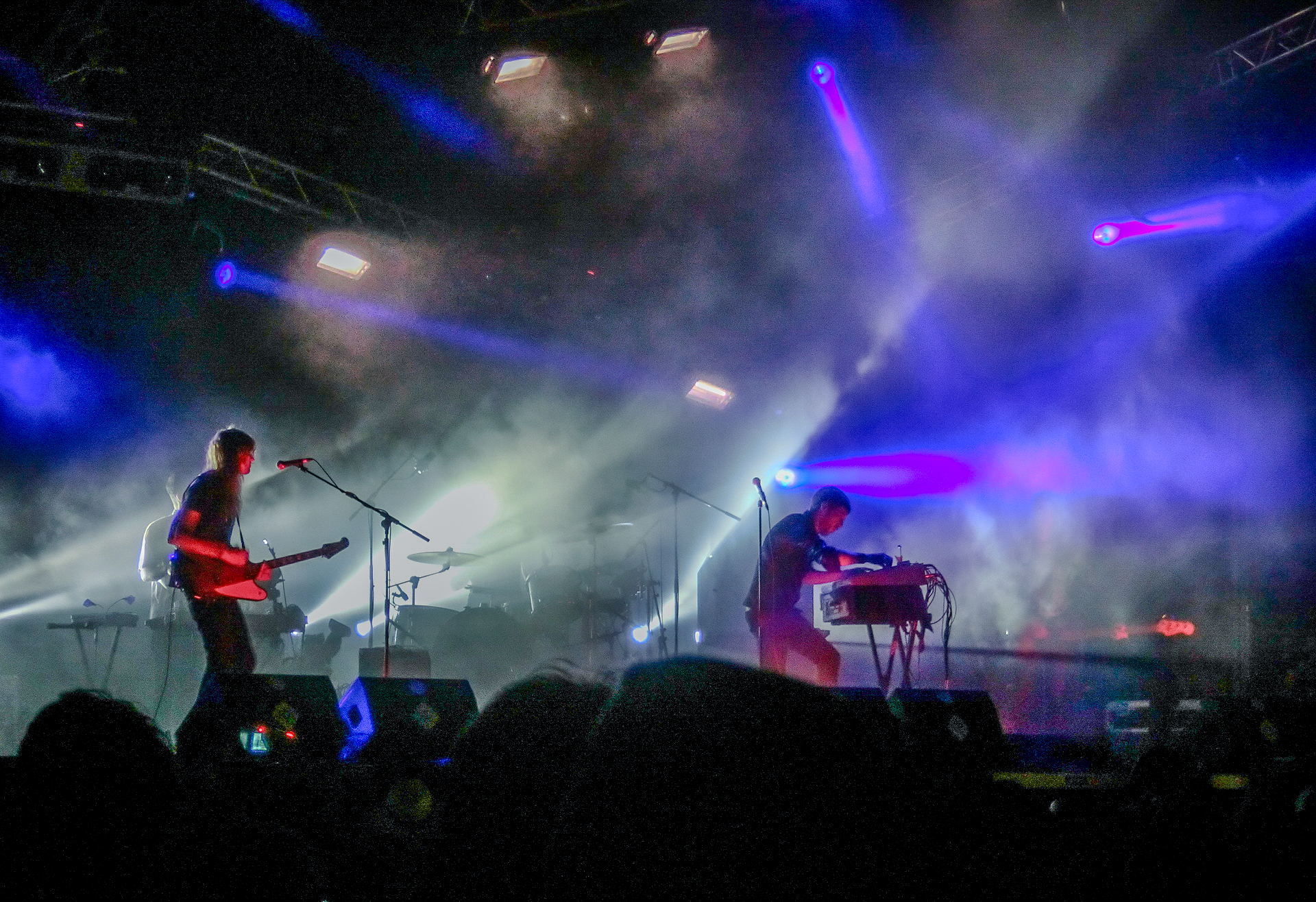
Why are you still using tape delays for effects instead of more typical hardware or software?
I have an Echoplex, the Roland Space Echo, and a Klemt Echolette ‘S,’ which I use every day to split things out. The computer is a distraction, really; if money wasn’t an object, I wouldn’t have a computer in the studio at all, and I’d record straight to tape. When I was living in New York, I was putting everything to tape in a studio called Key Club in Michigan, and the depth sounded magical, especially in combination with old sequencers. For me, tape calms the frequencies down and just gels the sound together.
"Back in the day, I had no expectations and channeled all my angst into making a record."
Now that you’ve had time to reflect, where do you think Death Mask is positioned in your back catalog?
I feel like it flows well from my last Death in Vegas album, Transmission. I made the tracks as long as I felt necessary, and I tend to make them longer now because I find the process quite meditative. Back in the day, I had no expectations and channeled all my angst into making a record, and there’s a similarity on that side, too. What’s weird is that the previous two Richard Fearless albums were made on exactly the same equipment, yet this really feels like a Death in Vegas album.
